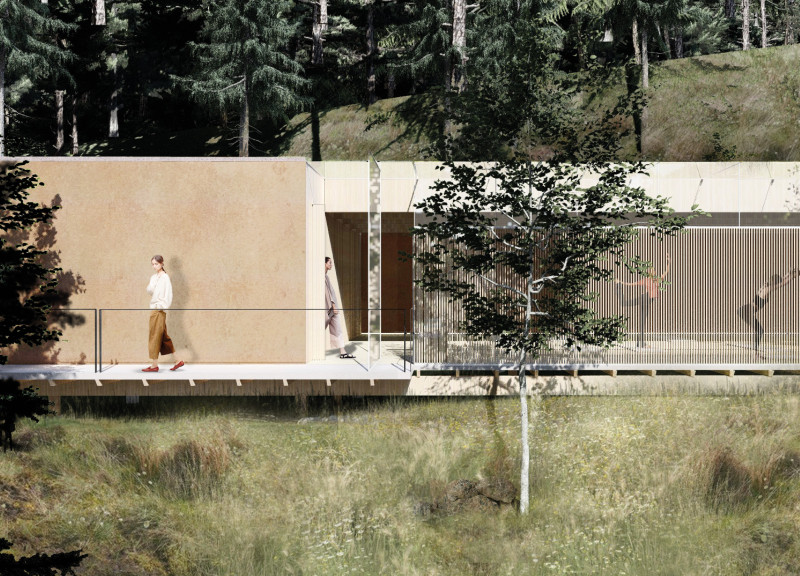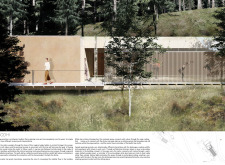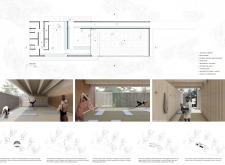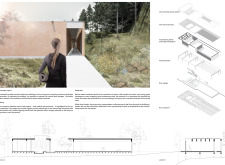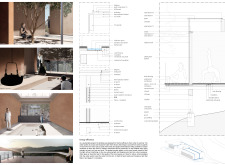5 key facts about this project
Spatially, the project is characterized by an entrance corridor that guides visitors towards a central yoga studio with large glass openings that frame the surrounding landscape. Adjacent to the yoga room, a patio garden serves as an intermediate space, promoting interaction with nature while providing an area for relaxation. This layout ensures that all functional components of the retreat are cohesively integrated, enhancing the overall user experience.
The project’s unique approach lies in its harmonious use of materials and its thoughtful relationship with the landscape. Key materials include cross-laminated timber for structural elements, cork paving for interior flooring, clay finishes for walls, and an expansive use of glass to facilitate natural light throughout the building. This material selection not only underscores the building's connection to its environment but also ensures a focus on sustainability. The incorporation of solar panels and rainwater recycling systems reflects the project's commitment to reducing its ecological footprint.
The architectural design also leads to an innovative spatial composition, wherein zones are meticulously organized to enhance movement and energy flow. The intent is to create an environment conducive to mindfulness practices through the deliberate arrangement of spaces dedicated to yoga, storage, and communal interaction. The integration of skylights further enhances the experience by allowing natural light to permeate the interior, creating a dynamic atmosphere that changes throughout the day.
In essence, "Bodhi" serves as a model of contemporary architecture that prioritizes user experience, sustainable design practices, and a strong connection to the natural landscape. Readers interested in exploring the specifics of the architectural plans, sections, and designs are encouraged to further examine the detailed project presentation for a comprehensive understanding of its innovative architectural ideas.


